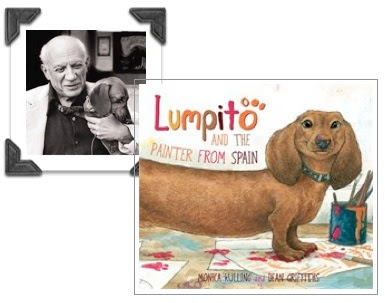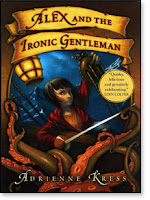Maniac Magee
by Jerry Spinelli
Little, Brown Books for Young Readers
978-0316807227
184 pp.
Ages 8-12
RL 5.2
1990
Typically read in Grade 5, Maniac Magee, winner of the 1990 Newbery Medal, tells the story of Jeffrey Lionel Magee. Orphaned at the age of three and enduring misery with his aunt and uncle until he runs away, Jeffrey "settles" in the town of Two Mills, a town racially divided between the predominantly black East End and the white West End. By virtue of his incredible athleticism and extraordinary feats of compassion and bravery, Jeffrey makes both friends and enemies, earning himself the moniker of "Maniac." Always looking for a place to call home, Jeffrey bounces from one temporary home to another, on both sides of town, trying to keep the part of him that is Jeffrey Magee.
Two prevalent themes in Maniac Magee are:
- homelessness; and
- discrimination.
The following youngCanLit all include storylines involving homeless persons and discrimination, based on race or other attributes. Each would serve well as updated and alternative novels to Maniac Magee. For each, I have looked at the two themes emphasized in Maniac Magee in terms of the youngCanLit selections.
 Heck, Superhero
Heck, Superhero by Martine Leavitt
Red Deer Press
144 pp.
Ages 9-13
2004
• Homelessness: Thirteen-year-old Heck finds himself alone on the street after he and his mom are evicted from their apartment and she takes off.
• Discrimination: Heck denies to himself that his mother has a mental illness, instead pretending that he is a superhero and that all is well. Heck's subsequent friendship with Marion, a mentally-ill boy, makes him realize that he cannot and must not ignore the nature of his mother's illness.

I Am a Taxi
by Deborah Ellis
Groundwood Books
205 pp.
Ages 10-13
2006
• Homelessness: Twelve-year-old Diego lives with his Mamá and 3-year-old sister Corina in the San Sebastian Jail for Women in Cochabamba, Bolivia after coca paste, used to make cocaine, was found under their seats on a public bus. Diego runs away with the aim of making money for his family but ends up homeless and far away from them.
• Discrimination: The people of Bolivia who consider the leaves of the coca as having cultural and sacred importance are discriminated against by the authorities who criminalize all those involved with the coca plants.
I'll Be Home Soon
by Luanne Armstrong
Ronsdale Press
200 pp.
Ages 10+
September, 2012
• Homelessness: When her mother goes missing, Regan finds herself scrounging for food and staying under the radar of the authorities. She finds help amongst the homeless in a tent city and a street busker who looks out for her, sharing his squat and limited resources.
• Discrimination: Though apprehensive of the homeless, Regan finds herself leaning on them for help and seeing beyond their lack of houses.
 Looking for X
Looking for Xby Deborah Ellis
Groundwood Books
132 pp.
Ages 11-13
1999
• Homelessness: Eleven-year-old Khyber who lives with her mom and autistic twin brothers in Toronto's Regent Park befriends a homeless woman, X, who becomes her alibi.
• Discrimination: As Khyber lives in poverty with her mother, a former stripper, and her two autistic brothers, she has had to endure much taunting, but being accused of vandalism forces her to stand up for herself and look for a way to clear her name.
The Maestro
by Tim Wynne-Jones
Groundwood Books
223 pp.
Ages 10+
1995, 2004
• Homelessness: After running away from his abusive father, Burl heads to the wilderness for relief and a home. Ultimately though, he needs shelter and food and finds it with an eccentric maestro. Even after the Maestro returns to the city, Burl looks for a way to keep himself from becoming homeless again.
• Discrimination: Although the discrimination in The Maestro is not significant, seen only in the Maestro's reluctance to take Burl in, preferring his solitude, and Burl unable to trust anyone with his secrets, the perceived inadequacies of the characters' by others could be seen as discriminatory. And I really wanted to include this award-winning book (Governor General's Award for Children's Literature; Canadian Library Association's Book of the Year for Children Award) in this list!
The Royal Woods
by Matt Duggan
Key Porter Books
218 pp.
Ages 9-12
2007
• Homelessness: When Sydney, 12, and her brother Turk, 9, find the farm they've run away to gone and replaced by a housing development, the Royal Woods, they find innovative ways to meet their needs for shelter, food and such.
• Discrimination: Although they find friendship and assistance from Shep McPharlain, an unusual homeless man, and Kumar, a kind illegal immigrant, not everyone sees the goodness in the group, including some locals and the Royal Woods Love, Friendship and Improvement committee!
Sketches
by Eric Walters
Puffin Canada
226 pp.
Ages 12-16
2007
• Homelessness: Fourteen-year-old Dana leaves an abusive home situation and ends up on the streets of Toronto, eventually teaming up with other homeless youths and finding some safety at Sketches, an art drop-in centre.
• Discrimination: The street youth are often "seen" in terms of their homelessness, even by Dana at first, instead of their capabilities or intentions.

A Tinfoil Sky
by Cyndi Sand-Eveland
Tundra Books
216 pp.
Ages 11-14
2012
• Homelessness: Mel is only twelve but she has endured an entire life of bouncing from homelessness to minimal housing, and even the promise by her mother that they are finally going home proves uncertain when Mel's grandmother refuses to take them in and Mel's mother leaves.
• Discrimination: Regardless of Mel's mature and caring nature with regards to their situation, her grandmother judges her daughter and granddaughter through her anger and disappointment, rather than what is in evidence.
Additional books that may be used, depending on your students' reading and interest levels, include:
Libertad
by Alma Fullerton
Fitzhenry & Whiteside
215 pp.
Ages 10+
2008
 No Ordinary Day
No Ordinary Dayby Deborah Ellis
Groundwood Books
978-1-55498-108-3
159 pp.
Ages 9-12
2011
Secret Signs
by Jacqueline Guest
Orca Book Publishers
140 pp.
Ages 9-11
2006
Theories of Relativity
by Barbara Haworth-Attard
HarperCollins
199 pp.
Ages 14+
2003






























































